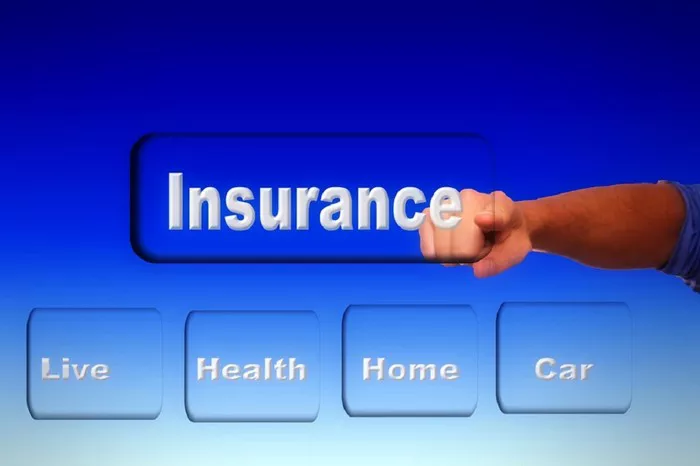Insurance cards are typically associated with medical services, providing access to healthcare benefits, including doctor visits, prescriptions, and hospital stays. However, in some cases, insurance cards may also be used for food-related benefits, especially for individuals receiving assistance through government programs or specific health insurance plans. This article will explore where you can use your insurance card for food, the types of food assistance programs available, and the benefits of utilizing insurance for food-related expenses.
Types of Insurance and Food Assistance Programs
In the United States, food assistance programs are often linked to government benefits rather than private health insurance plans. These programs can help low-income families and individuals obtain food through various channels, and in some cases, they may involve the use of an insurance card.
1. Supplemental Nutrition Assistance Program (SNAP)
The most common form of food assistance in the U.S. is the Supplemental Nutrition Assistance Program (SNAP), formerly known as food stamps. While SNAP does not require an insurance card for use, it is essential to mention as it is often confused with insurance-related food benefits.
SNAP provides monthly benefits to eligible low-income individuals and families to help them purchase food at participating stores. The benefits are issued through an Electronic Benefits Transfer (EBT) card, which is not the same as a health insurance card. However, SNAP benefits can be used for a wide variety of food items, including fresh produce, dairy, meat, and packaged goods at authorized retailers.
2. Medicaid and Supplemental Nutrition Programs
Medicaid is a federal and state program that provides health coverage for eligible low-income individuals and families. While Medicaid itself does not directly cover food purchases, some states have integrated supplemental nutrition programs for individuals receiving Medicaid benefits.
In certain states, Medicaid recipients may receive additional assistance through programs such as:
The Medicaid Nutrition Program: This program aims to support the health and nutrition of low-income families by providing vouchers or other forms of nutritional assistance.
Women, Infants, and Children (WIC): WIC is a federally funded program that provides food benefits to pregnant women, new mothers, and young children. In some states, individuals who qualify for Medicaid may also be eligible for WIC benefits. These benefits can help families access nutritious food for children and expectant mothers.
While WIC does not involve an insurance card for food directly, some states may allow beneficiaries to use their Medicaid insurance card to access WIC benefits, which can be used for purchasing healthy foods such as fruits, vegetables, whole grains, and infant formula.
3. Health Insurance Programs with Food Support
Some health insurance programs have started to integrate food-related support into their benefits. While this is still relatively rare, there are a few programs where health insurance plans may cover food assistance or nutritional services. These programs often focus on helping individuals with specific health conditions that require dietary support.
A. Medicare Advantage Plans with Food Benefits
Certain Medicare Advantage plans (Medicare Part C) offer additional benefits, such as access to food programs, to help individuals with chronic conditions like diabetes, hypertension, or heart disease. These plans may offer members access to food delivery services, meal kits, or grocery store gift cards to support healthy eating and prevent diet-related illnesses.
In some cases, these benefits may allow recipients to use their insurance card or a separate benefits card for food-related expenses. These programs aim to address food insecurity as a social determinant of health, providing individuals with better access to nutritious meals.
B. Private Insurance Plans with Food Benefits
Some private insurance plans, particularly those with a focus on holistic health, may offer food-related benefits. For example, certain insurers may provide food assistance to individuals with specific health needs, such as:
Meal delivery services: Insurers may partner with meal delivery companies to provide healthy meals for patients recovering from surgery or managing chronic conditions.
Food vouchers: Some plans may offer food vouchers or reimbursements for members who need to purchase specific foods, such as diabetic-friendly meals or nutritional supplements.
These benefits are typically available through specialized health plans and may be accessed with an insurance card or through a separate benefits card.
4. Community and Charity Programs That Accept Insurance Cards
In addition to government programs, some community organizations and charities provide food assistance to low-income individuals. While these organizations primarily rely on donations and volunteers, there are instances where they may accept insurance cards for certain food-related services.
A. Food Banks and Pantries
Some food banks or pantries partner with health insurance providers to offer food assistance to their beneficiaries. In certain cases, health insurance providers may offer food or nutrition vouchers to individuals who are members of a specific insurance plan. These vouchers can be used at local food banks or pantries, which distribute free food to individuals in need.
B. Meal Programs for Seniors
There are also community-based meal programs, such as Meals on Wheels, that serve nutritious meals to elderly individuals. In some areas, these programs may accept insurance cards or provide food services for those covered under Medicaid or other insurance plans for seniors.
These programs focus on ensuring that seniors have access to the necessary food for their health, but in some cases, insurance cards may be accepted to cover the cost of the meal.
How to Access Food Benefits with Insurance
If you are interested in using your insurance card for food, there are several steps you can take to access the available benefits. Depending on your health insurance plan or government assistance program, the process may vary.
1. Check Your Eligibility
Before you can use your insurance card for food, you need to confirm whether you are eligible for any of the programs mentioned earlier. For government programs such as SNAP, WIC, or Medicaid, you will need to meet certain income and health-related requirements.
For private insurance plans, check with your insurer to see if food-related benefits are included in your plan and whether you can use your insurance card for meal delivery, grocery shopping, or nutritional services.
2. Contact Your Insurance Provider
If you are covered by a health insurance plan with food benefits, your next step is to contact your insurance provider directly. Insurance providers often have dedicated customer service representatives who can help you understand your benefits and provide guidance on how to use your card for food-related expenses.
They will be able to explain the details of the program, the types of food that are covered, and how to access the benefits.
3. Find Participating Locations or Services
Once you have confirmed that you are eligible for food benefits, the next step is to find participating locations where you can use your insurance card. If you are enrolled in a government program like SNAP or WIC, you will need to find authorized grocery stores and farmers’ markets that accept your EBT card.
For private insurance plans or Medicare Advantage programs offering food services, the insurance provider will give you a list of approved vendors or meal delivery services that accept your benefits.
4. Redeem Your Benefits
Once you have located the participating stores or services, you can redeem your food benefits. For SNAP or WIC, you will use your EBT card at the checkout. For health insurance-related food benefits, you may either pay for your meals upfront and submit a claim for reimbursement, or your insurance card may be swiped at participating vendors directly.
Always check the details with your insurer or program administrator to ensure that the transaction goes smoothly.
Benefits of Using Insurance for Food
Using insurance cards for food benefits can offer several advantages, particularly for individuals and families facing food insecurity or managing chronic health conditions.
1. Improved Access to Nutritious Food
By offering food assistance through health insurance programs, individuals can access nutritious food that supports their health. For example, individuals with diabetes can receive benefits for foods that support their blood sugar control, and seniors can receive meals that cater to their dietary needs.
2. Reduced Financial Burden
Food assistance programs help reduce the financial burden on families, allowing them to spend money on other essential needs. The availability of food benefits can help free up funds for other important expenses such as housing, education, and transportation.
3. Better Health Outcomes
Access to healthy food can have a positive impact on health outcomes, particularly for individuals with chronic conditions. By addressing food insecurity and providing better access to nutritional meals, insurance programs can help improve long-term health and prevent complications related to diet-related diseases.
Conclusion
While insurance cards are typically associated with healthcare services, they can also play a role in food assistance through government programs like SNAP, Medicaid, and specialized health insurance plans. These benefits help individuals and families gain access to nutritious food, reducing the financial strain and improving overall health.
To take advantage of these benefits, it’s important to understand the eligibility requirements, contact your insurer or program administrator, and find participating providers that accept your insurance card for food. By doing so, you can make the most of your insurance coverage and ensure that you and your family have access to the food you need for a healthy lifestyle.
Related Topics:

































